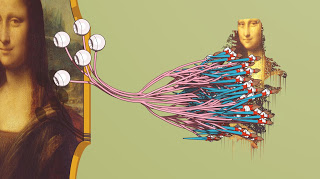Summary:
Mathematicians and neuroscientists have created the first anatomically accurate model that explains how vision is possible. “A lot of the things you think you see you’re actually making up,” said Lai-Sang Young, a mathematician at New York University. “You don’t actually see them.” New research suggests mathematics is the key. For the past few years, Young has been engaged in an unlikely collaboration with her NYU colleagues Robert Shapley, a neuroscientist, and Logan Chariker, a mathematician. They’re creating a single mathematical model that unites years of biological experiments and explains how the brain produces elaborate visual reproductions of the world based on scant visual information. Quanta Magazine A Mathematical Model Unlocks the Secrets of Vision
Topics:
Mike Norman considers the following as important:
This could be interesting, too:
Mathematicians and neuroscientists have created the first anatomically accurate model that explains how vision is possible. “A lot of the things you think you see you’re actually making up,” said Lai-Sang Young, a mathematician at New York University. “You don’t actually see them.” New research suggests mathematics is the key. For the past few years, Young has been engaged in an unlikely collaboration with her NYU colleagues Robert Shapley, a neuroscientist, and Logan Chariker, a mathematician. They’re creating a single mathematical model that unites years of biological experiments and explains how the brain produces elaborate visual reproductions of the world based on scant visual information. Quanta Magazine A Mathematical Model Unlocks the Secrets of Vision
Topics:
Mike Norman considers the following as important:
This could be interesting, too:
Robert Vienneau writes Austrian Capital Theory And Triple-Switching In The Corn-Tractor Model
Mike Norman writes The Accursed Tariffs — NeilW
Mike Norman writes IRS has agreed to share migrants’ tax information with ICE
Mike Norman writes Trump’s “Liberation Day”: Another PR Gag, or Global Reorientation Turning Point? — Simplicius
Mathematicians and neuroscientists have created the first anatomically accurate model that explains how vision is possible.
“A lot of the things you think you see you’re actually making up,” said Lai-Sang Young, a mathematician at New York University. “You don’t actually see them.”
New research suggests mathematics is the key. For the past few years, Young has been engaged in an unlikely collaboration with her NYU colleagues Robert Shapley, a neuroscientist, and Logan Chariker, a mathematician. They’re creating a single mathematical model that unites years of biological experiments and explains how the brain produces elaborate visual reproductions of the world based on scant visual information.
Quanta Magazine

